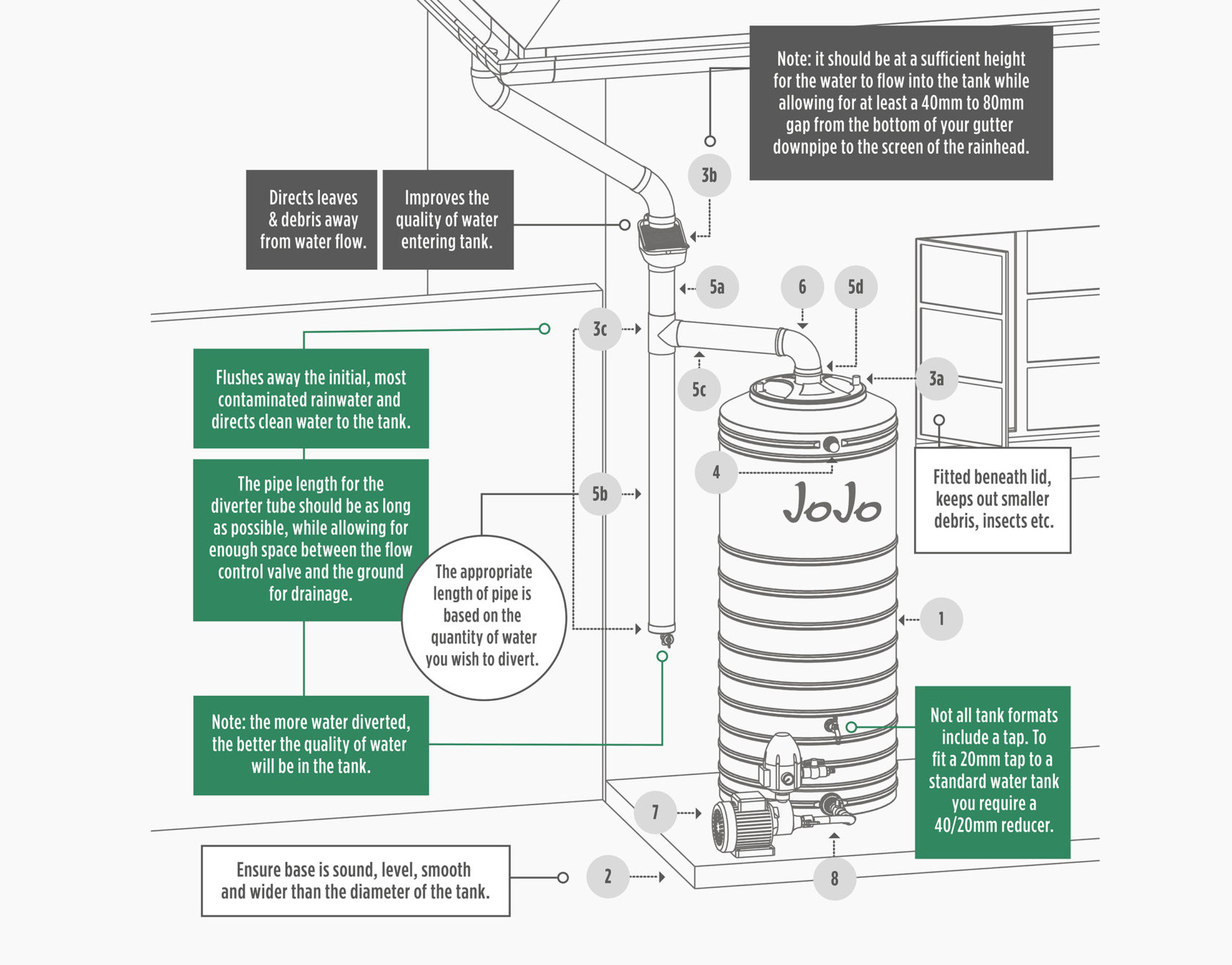STAY ALERT, STAY SAFE!
For a smooth and stress-free experience, always verify SA Home Loans branch and consultant details here on our official website. Remember, we’ll never ask for any fees or monies to be paid upfront.
How To Set Up A Simple Rainwater Harvesting System
After reading the previous article, you should be motivated to use every drop of water wisely in your home and reusing grey water where you can. But you'll still need a source of water which is a problem in some areas.
Let’s look at what it takes to harvest rainwater and the estimated cost. For a more detailed discussion download the full sustainable living guide.
The amount of water you can harvest is determined by three factors:
- The size of your roof catchment area
- The amount of rainfall that your suburb gets in a year
- The size of your storage tanks
As a rough guide, we estimate that 1 mm of rain on 1 m² of roof = 1 litre of water
What do you need to build a rainwater harvesting system?
For a basic rainwater harvesting system, you will need the elements below:
- You need a water tank. Normally the size of the tank depends on the amount of space you have at home. Estimate R2 500 - R2 850 for a 1 000 L tank.
- This tank needs to stand on a solid base and be supported. The tank is generally placed underneath or close to the downpipe. Estimate concrete plinth: R600 for materials (assumed DIY labour) and plumbing fittings and piping R400 – R1 000.
- An initial pre-filtration is required to keep the leaves and bigger particles out of the tank. Estimate R1 000.
- Now that the water can be collected in your tank, you need a small pump to pressurise the water so that you can use it. The size pump will depend on the amount of water you need. Estimate booster pumps: R1 675 (0.37 kW) to R10 249 (variable speed drives and pressure control).
If you do some of the work yourself and can get away with a basic system, it can cost as little as R6 000.
Figure 1 shows the components of a standard rainwater harvesting system.

What can I use rainwater for?
Generally, harvested water is used as grey water to flush toilets, wash hands or for other non-potable (drinking) purposes.
In the next six of our 13-part series, we look at savvy plans to put in place to minimise load shedding from disrupting your family’s life.
Ready to invest in a power or water saving solution for your home? If you’re an SA Home Loans client, we'll help you finance it through your home loan.
